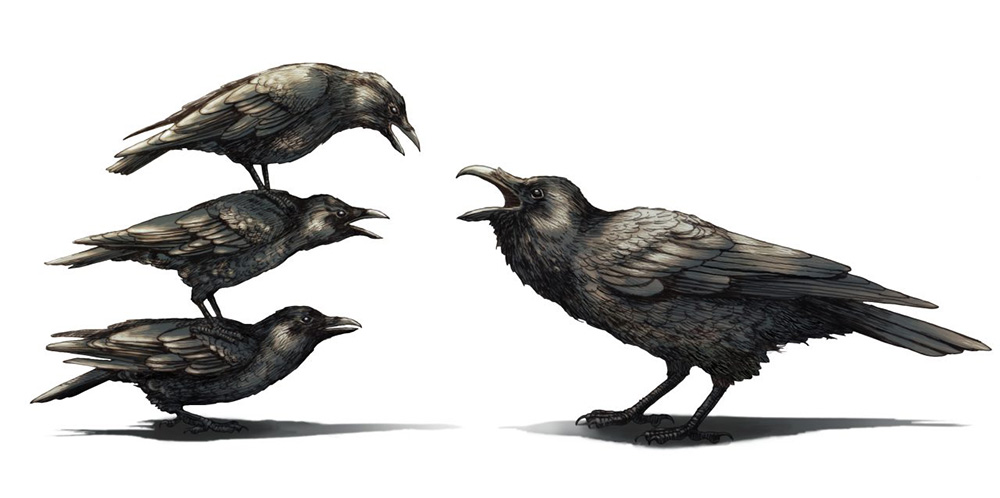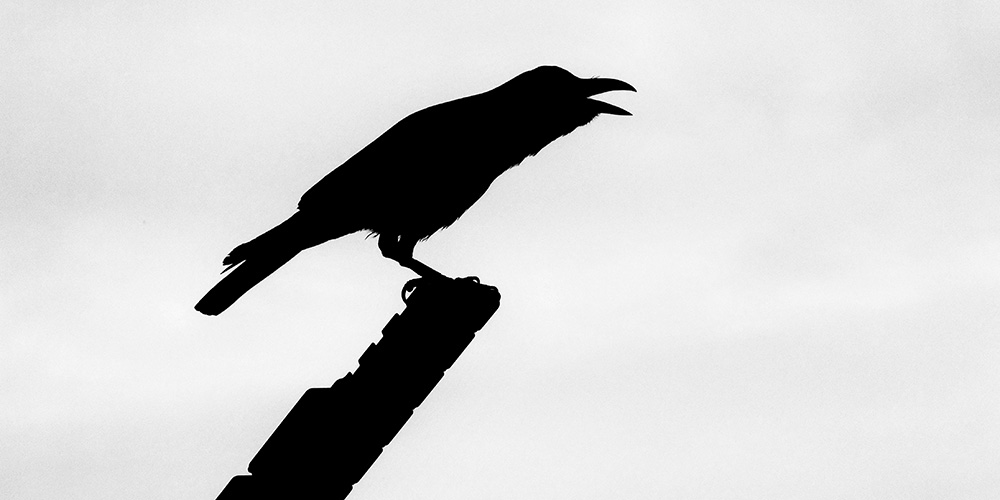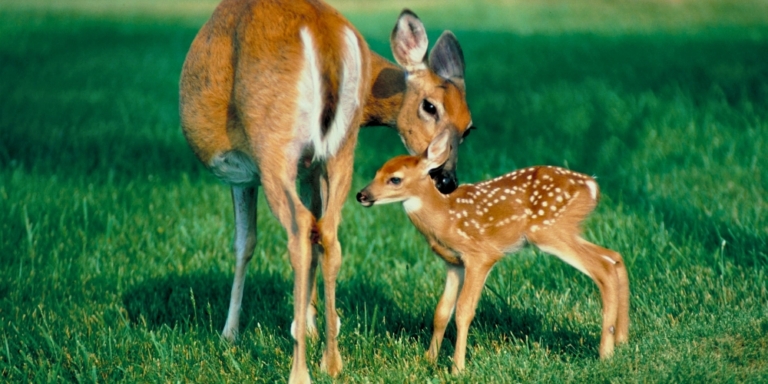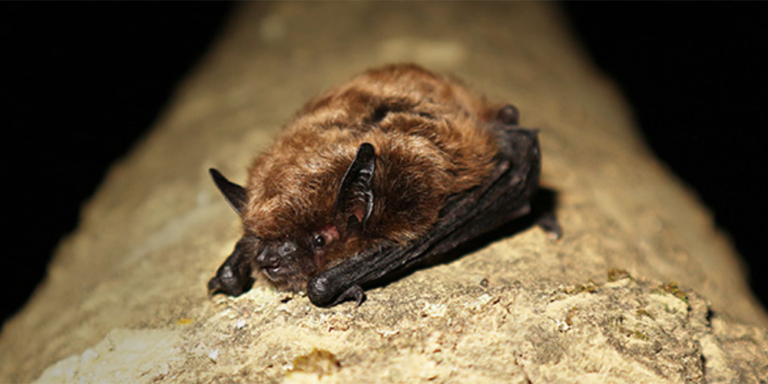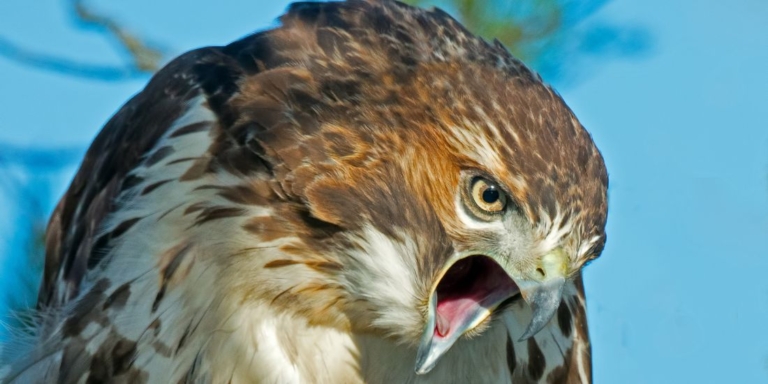With Halloween fast approaching, our thoughts have turned to the creatures that torment that scary eve: crows, ravens, bats, and wolves. We can all probably identify a bat or wolf, but do you know the differences between crows and ravens?
Spotting the Differences
First, check the size of the bird.
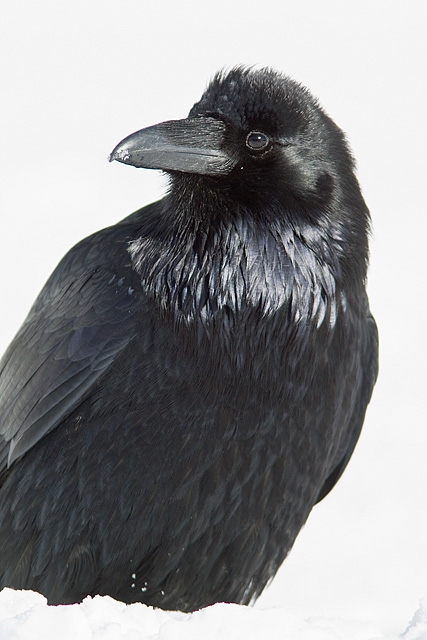

Ravens are the big guys, about the size of a hawk. Crows? They’re more on par with doves and pigeons.
Now check out their bills.
A raven’s bill is larger, heavier, and curvier, perfect for breaking apart frozen food and picking meat off carcasses. Crows have a smaller, straighter bill. While both species have bristles at the base of the beak, the raven’s are noticeably longer. Think of ravens as having a Roman nose with long nose hairs.
Look at those shiny feathers.
Ravens boast a glossy-black plumage with iridescent blue, green, and purple hints, especially in sunlight. Crows, though still black, lack that lustrous sheen and rainbow kaleidoscope.
Look up at the tails.
A raven’s tail is wedge-shaped in flight due to longer central feathers. Crows have fan-shaped tails.
Are the birds in a group or solo?
Crows are social butterflies, often seen in small flocks. Ravens are more lone-wolf, usually spotted solo or in pairs.
Mob Mentality
Now, here’s where things get interesting.
In nature, the bigger species tend to dominate, but crows flip this script regarding ravens.
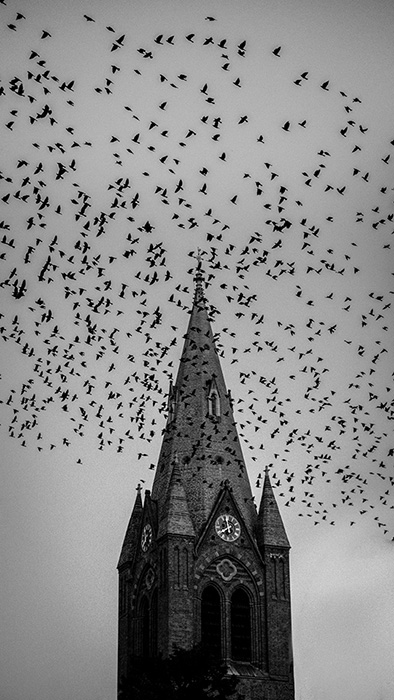

Ben Freeman, a researcher, notes that he’s often seen multiple crows ganging up to harass a lone raven, even though ravens are significantly larger. This behaviour, known as ‘mobbing,’ is a strategy smaller birds use to level the playing field against bigger threats.
And while crows are often on the receiving end of mobbing from even smaller birds like blackbirds, they’re not shy about using this tactic against their larger cousins.
Data from the eBird program at the Cornell Lab showed that crows were almost always the aggressors in encounters with ravens, but only when they had the advantage in numbers.
When is the peak of this mobbing behaviour?
From March to May, the crow breeding season is when you see this mobbing the most. Ravens, you see, have a nasty habit of raiding crow nests. So, it’s no surprise that crows would rally the troops to fend off these egg-snatching bullies.
But do the ravens care about this mobbing?
While a raven might dodge a diving crow in flight, if it’s perched and the crows keep their distance, it’s more of an annoyance than a threat.
But around Halloween, rather than mobbing, you’ll see crows flying in large groups after sunset to spend the night in roosts. These roosts may contain hundreds or even thousands of birds. Roost sites are generally located in groups of trees, often near water, and are used for many years if they aren’t disturbed. Basically, they are neighbourhood sleeping sites for crows.
Imagine coming across a roost of crows while wandering at dusk in a graveyard. Spooky! No wonder crows have a scary reputation!
Ravens and crows, while similar, have distinct differences that make them unique. Their interactions, especially the mobbing and roosting behaviour exhibited by crows, offer a fascinating glimpse into the complex dynamics of the bird world.
So, next time you spot these black birds, take a moment to observe and appreciate the drama unfolding before you. Now that’s not too scary, is it?
